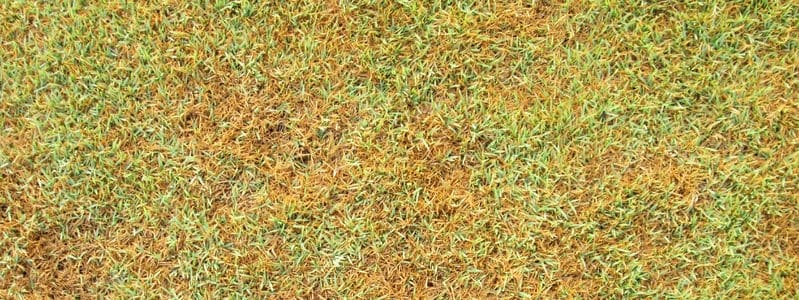4 Ways You’ve Been Secretly Killing Your Lawn

1. Kill weeds, not grass
It is not uncommon for weed killers to affect lawns as well. Many weed killers that claim to be “lawn friendly” are still products that kill all plants. These are called non-selective herbicides. While effective, they kill both your weeds and your lawn.
When dealing with herbicides, be selective about how you use them. For instance, a man in Minnesota used herbicide on his entire lawn. Making a common mistake, he did not thoroughly read the labeled instructions & warnings and ended up with no weeds and no grass. Avoid irreparable lawn damage by selecting an herbicide that is safe for your variety and reading & following the labeled instructions as precisely as possible.
Do your best to attack weeds before they become a problem. Pre-emergent herbicides can be applied before weeds emerge on your lawn. Most pre-emergents are effective for up to 90 days and must be applied when soil temperatures are ideal for spring & fall weed seed germination for several days. Because ambient & soil temperatures fluctuate constantly in Texas, you may need to apply a third application in the late spring or early summer for optimal results.
2. Dog Urine
If your dog urinates in a particular spot, you will see a patch of dead grass appearing out of nowhere. This may be because your dog’s urine is full of nitrogen, making it more acidic. Your dog urinating on your lawn is equal to constantly pouring concentrated high-nitrogen fertilizer on a small patch of grass.
There are easy fixes. The levels of nitrogen in your dog’s urine may have to do with its diet. Constant dry food promotes higher nitrogen content (as well as increased risk of urinary tract infections). Low-quality proteins also cause higher levels of nitrogen. Balancing the diet with high-quality proteins and wet food, and ensuring your fur baby stays hydrated with clean drinking water, can help the situation. The moisture works to dilute nitrogen content within the endocrine system, creating a healthier stream.
If you cannot feed your dog wet food for some reason, carry a bottle of water with you when you take your dog to the bathroom. When the dog goes, pour the water on the affected area. Water will help dilute the chemicals, preventing too much damage from happening.
3. Mowing the grass too short
Many inexperienced lawn owners cut their grass too short and don’t even realize it. Without a certain blade surface, your grass cannot absorb the sunlight needed for photosynthesis, reducing leaf & root development. With less blade surface, your lawn will absorb and store less water & nutrients.
Removing more than 1/3 of the blade in a single mowing will
your grass, and it will use all of its energy trying to recover. This makes your lawn more susceptible to weeds, diseases, and detrimental insects. Mowing too low can also damage the sensitive crowns and over-expose them to direct sunlight, causing lawn heat stress. It is essential to maintain the grass variety’s proper mow height, always observing the 1/3-blade mow rule.
If you want to keep a clean, manicured lawn, you need to explore different kinds of grass before settling. Various types of grass have different recommended mow heights, blade widths, and textures, which create different looks for your lawn. If you wish to have a lawn, you must be willing to work with its natural tendencies and let it grow a bit before you cut it.
4. Blocking the sun
Your lawn needs sunlight. If you have architecture or fencing that prohibits sunlight, you are hurting your lawn. Any looming buildings or extra structures can block the flow of light to select patches of grass. Dense tree canopies can also cause issues, depending on the sunlight conditions throughout the day. Some varieties will perform well with heavily dappled sunlight, and some need direct sunlight all day. Choosing the best variety for your environment should be high on your checklist.
Correcting low-light conditions can be challenging or impossible. You must weigh the cost of having grass in the selected area versus tearing down or moving the structure and consistently removing & raising your tree canopies, which may be a time and cost-intensive process. Instead of having to decide later if you want a lawn, make sure that before you plant you weigh the pros & cons of creating and maintaining the proper sunlight conditions required for healthy grass.





